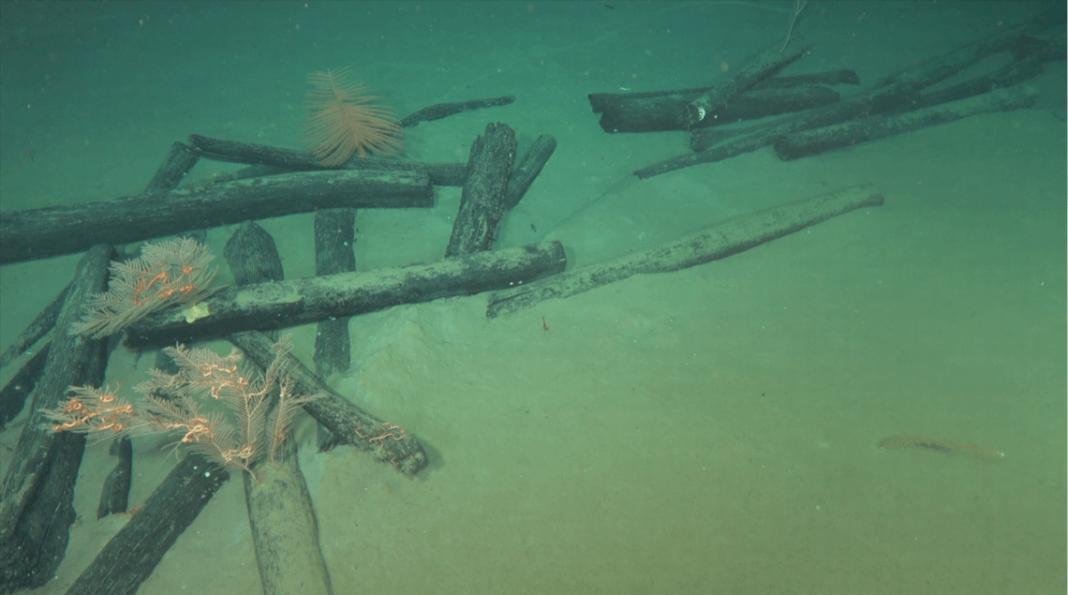500-Year Wreck with Porcelain, Wood Found in South China Sea
Archaeological Triumph: Preserved Shipwrecks Unlocking Secrets of Ancient Global Trade Routes

Two ancient shipwrecks from the Ming Dynasty have provided archaeologists with over 100,000 relics. The shipwrecks were discovered about 1.5km (or 1 mile) below sea level on the northwest slope of the South China Sea.
According to experts, the older of the two shipwrecks dates to the Zhengde period of the Ming dynasty, which lasted from 1506 until 1521. The first wreck mainly contains porcelain wares, while the second is primarily a large number of wooden logs, most of which have been processed.
Footage courtesy of @CNN
The South China Morning Post reports that the two shipwrecks used the submersible Shenhai Yongshi, or Deep Sea Warrior, in October 2022. The relics are in piles in various compartments; the highest pile is over three meters high.
“The wrecks are both relatively well-preserved, and a large number of relics have been uncovered,” Yan Yalin, director of the archaeology department of NCHA, said at a press conference held Sunday in Sanya, South China’s Hainan Province.
“The well-preserved relics are of high historical, scientific, and artistic value. It may constitute a world-class deep-sea archaeological discovery,” he added.
Song Jianzhong, head of the archaeological project and a researcher at the National Centre for Archaeology, told the Global Times on Monday that in the middle of the Ming Dynasty, China often imported timber from Southeast Asia.
He explained that the timber was usually used to build buildings, like the emperor’s palace.
Here’s what archaeologists have found in the shipwrecks so far.
Experts determined that the first shipwreck dates to the Zhengde period of the Ming dynasty — which lasted from 1506 until 1521.
More than 100,000 relics, mostly made of porcelain, have been uncovered so far, and experts said they are spread across hundreds of square metres.

Photos from the discovery show stacks of porcelain pottery.
The wreck was overflowing with porcelain goods, including bowls, cups, plates, and jars in various glaze colors, officials said.
Although most pieces are covered with sand and dirt, ornate, colourful patterns are still visible beneath the grime.
Officials said that further explorations of the shipwrecks and artifacts will give experts more insight into ancient trade routes.
The second, older shipwreck dates to the Hongzhi period of the Ming dynasty — which lasted from 1488 until 1505.
Experts said they found the logs in neat stacks.
Permissible logs were all a similar size and were neatly stacked. The logs could have been intended for shipbuilding, according to officials.

Further research revealed that the logs could have been intended for shipbuilding, experts said.
Chinese literature indicates that most products used to build ships were imported from foreign countries.
Archaeologists said their discovery marks the first-time ancient ships sailing and returning found in the same area, indicating they were likely on an important trade route.
Ku Weiqun, an official from CAS, said at the conference that the academy established the Institute of Deep-sea Science and Engineering in Sanya in 2011 and has developed some advanced landers, making China the fourth country in the world with the ability to detect objects at a depth of over 10,000 meters.
This investigation utilised advanced technologies and equipment, including permanent underwater mapping markers, extended baseline positioning techniques, and different recording methods. New equipment, such as flexible robotic arms and sandblasting devices, also proved critical to accurately survey and extract cultural artifacts from these complex deep-sea environments.
According to Ku, China’s progress in this field provides an exciting glimpse into the future of marine archaeology and technology worldwide. They continue to invest in research and development to meet the growing demand for broader coverage, deeper dives, and higher precision in deep-sea observation and excavation.
They said that experts will continue researching and monitoring the wrecks and hope to learn more about ancient maritime trade routes and cultural exchanges.
Chen Chuanxu, a scientist at the Institute of Deep-sea Science and Engineering, said the two shipwrecks were discovered during the 500th dive of the submersible Deep Sea Warrior. In the following work, China’s scientific research vessels Tansuo 1 and Tansuo 2, equipped with the submersible Fendouzhe, or Striver, will join the mission for further exploration.
Related Post
A shocking documentary proves that mermaids do exist
SHOCKING Revelation: Thuya, Mother of Queen Tiye, Was the Grandmother of Akhenaten and Tutankhamun—What Ancient Egyptian Secrets Did She Leave Behind?
Breaking News: Astonishing Discoveries at Karahan Tepe Confirm an Extraterrestrial Civilization is Hiding on Earth, and NO ONE Knows!
Breaking News: Researchers FINALLY Discover U.S. Navy Flight 19 After 75 Years Lost in the Bermuda Triangle!
NASA’s Secret Investigation: Uncovering the Astonishing Mystery of the UFO Crash on the Mountain!
Explosive UFO Docs LEAKED: Startling Proof That Aliens Ruled Ancient Egypt!